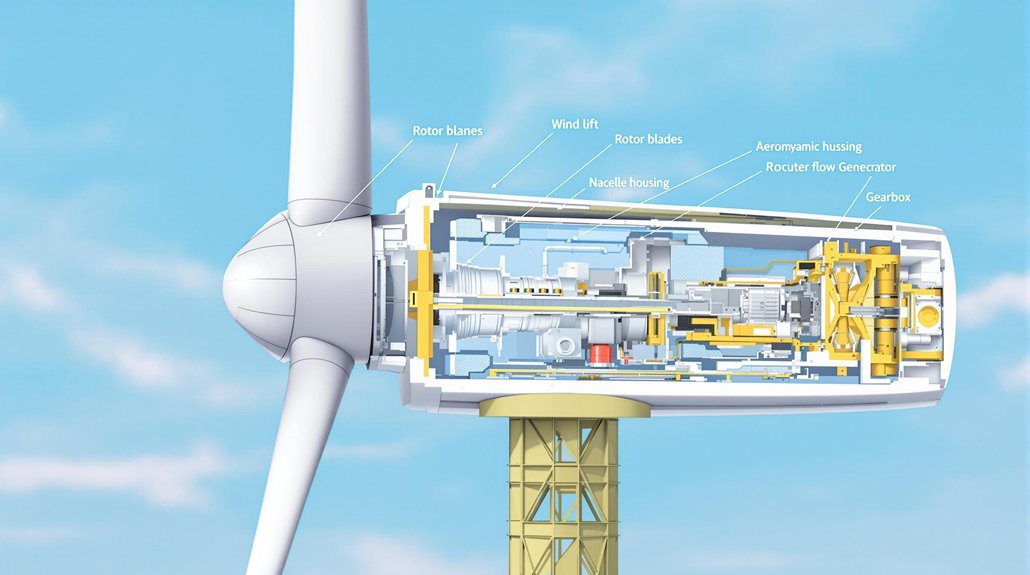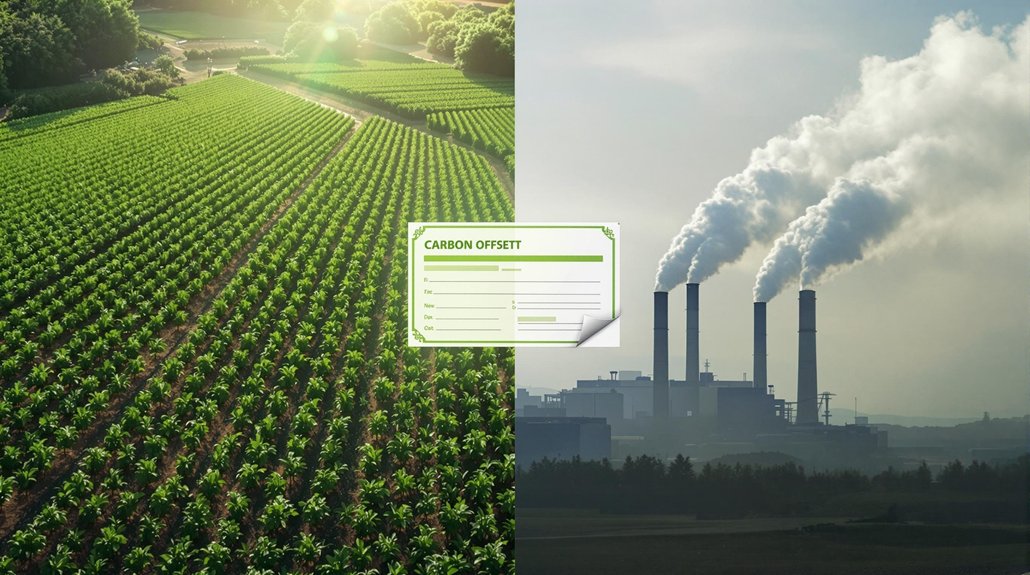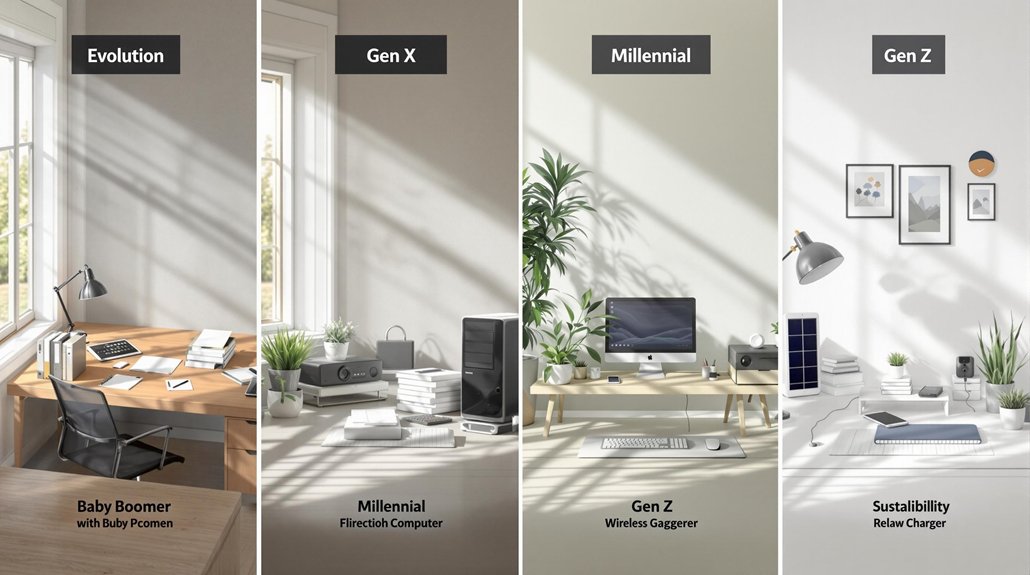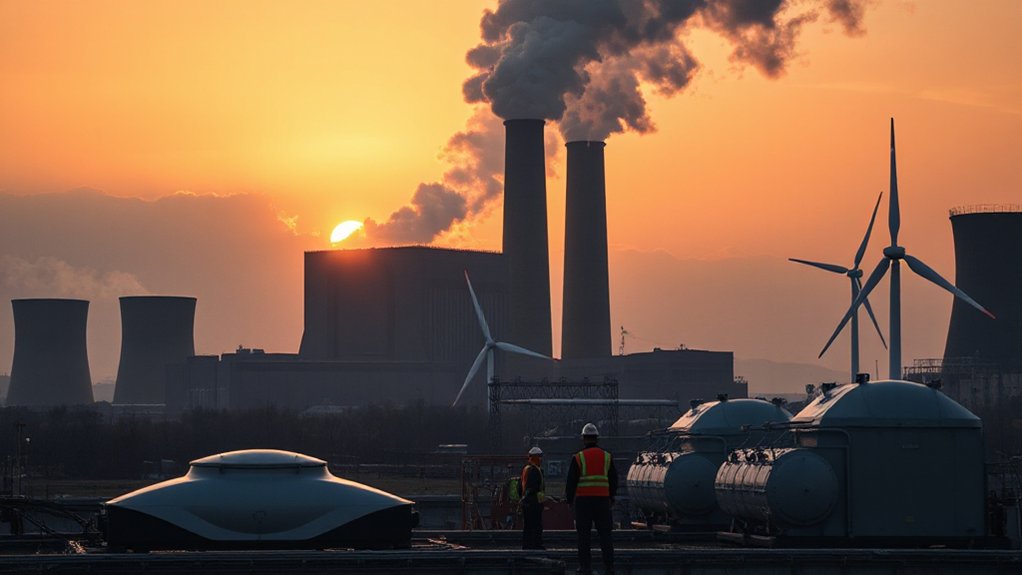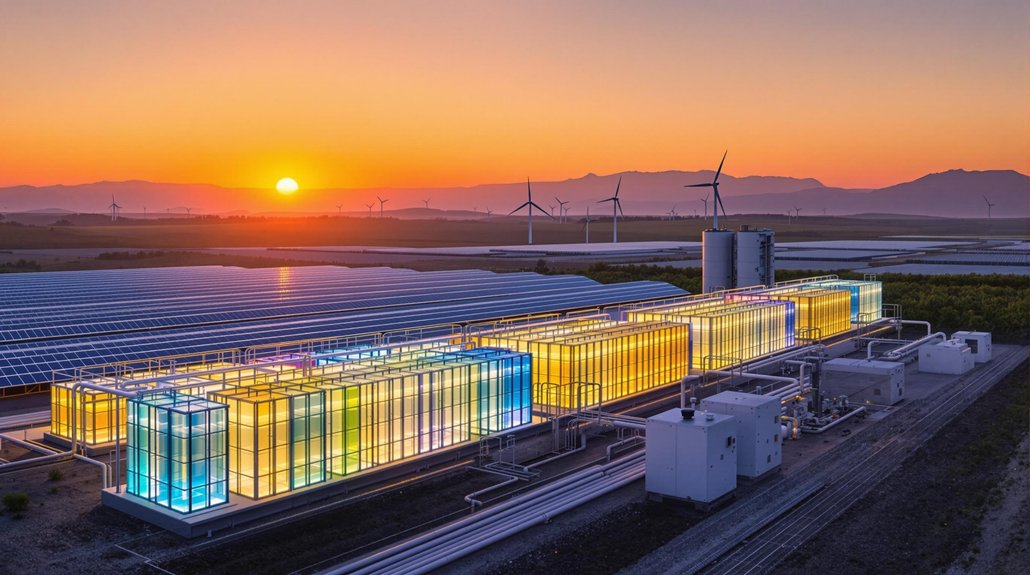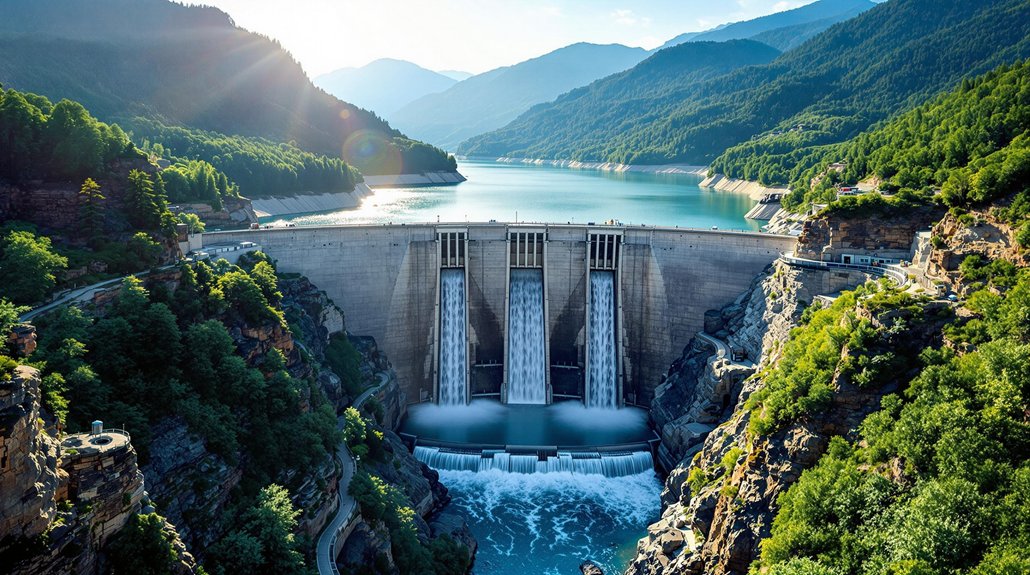Wind turbines convert wind energy into electricity through several key components. The tall tower supports a nacelle containing the generator and gearbox. Three aerodynamically designed blades capture wind energy, spinning a shaft that connects to the generator. Control systems adjust the blade pitch and turbine direction to maximize efficiency as wind conditions change. Turbines begin generating at 6-9 mph and reach peak production at 25-35 mph. The engineering behind these renewable energy giants reveals remarkable precision.
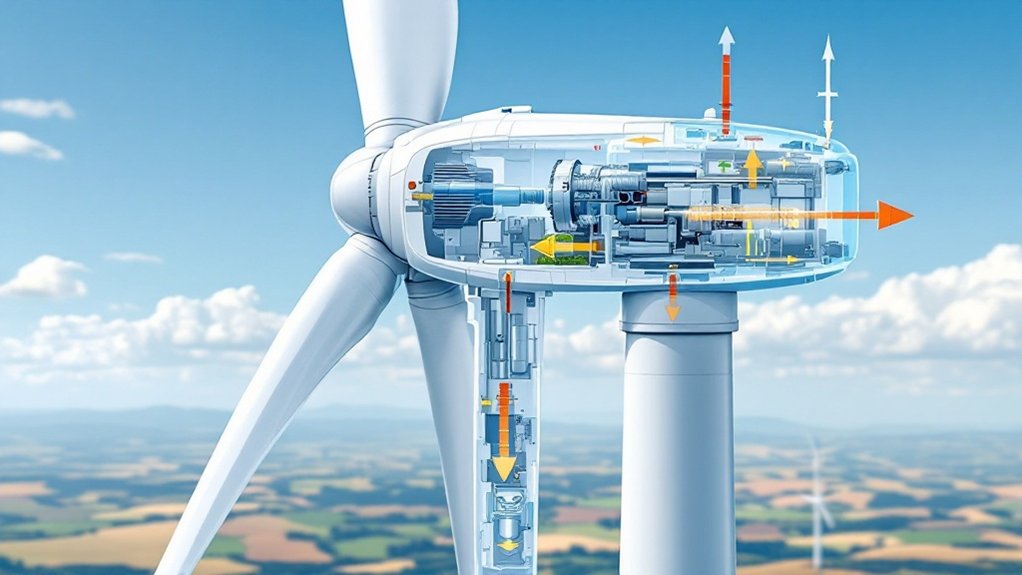
Thousands of wind turbines dot landscapes and coastlines around the world, converting the power of moving air into electricity. These towering structures operate on a simple principle: capture wind energy and transform it into electrical power. Each turbine consists of several key components working together in a carefully engineered system.
The most visible parts of a wind turbine are the rotor blades. Typically, three blades extend from a central hub, ranging from 30 to 80 meters in length. Made from lightweight but durable materials like fiberglass, these blades have an aerodynamic shape that creates lift when wind passes over them, causing rotation. This design works similar to airplane wings but in reverse – creating motion rather than stability.
Wind turbine blades transform air movement into rotation through aerodynamic lift – airplane wings reversed.
Behind the blades, the nacelle houses the turbine’s essential components. This box-shaped structure contains the generator, gearbox, brake system, and cooling systems. When blades turn, they spin a low-speed shaft connected to a gearbox. The gearbox increases this rotational speed to levels suitable for the generator, which converts the mechanical energy into electricity through electromagnetic induction. Modern engineering has developed turbines with multipolar generators that connect directly to the rotor, eliminating the need for a gearbox.
Wind speed critically affects turbine operation. Turbines need at least 6-9 mph of wind to begin generating electricity (cut-in speed), while they reach peak production at their rated speed of 25-35 mph. For safety, turbines automatically shut down when winds exceed 55-65 mph (cut-out speed). The relationship between wind speed and power output isn’t linear – power increases cubically with wind speed, meaning small increases in wind produce large gains in electricity.
Advanced control systems help maximize efficiency. Anemometers measure wind speed, while wind vanes detect direction. The yaw system then rotates the entire nacelle to face directly into the wind. Meanwhile, the pitch system adjusts blade angles to enhance performance in changing conditions. Despite these controls, physics limits wind turbines to a theoretical maximum efficiency of 59.3% (Betz’s Law), with practical efficiency ranging between 35-50%. Modern turbines now produce electricity for 80% of the year on average, a significant improvement from earlier generations.
The entire structure stands on a tall tower anchored by a substantial foundation, placing the blades at heights where winds are stronger and more consistent. This efficient design allows wind energy to serve as a renewable resource that doesn’t deplete natural elements while generating clean electricity.
Frequently Asked Questions
What Is the Average Lifespan of a Commercial Wind Turbine?
Commercial wind turbines typically last 20-25 years on average.
Modern units can operate for up to 30 years with proper maintenance, while offshore turbines often have shorter lifespans due to harsh marine conditions.
While towers and foundations usually last the full lifespan, other components require earlier replacement.
Blades, gearboxes, and generators often need repair or replacement after 10-15 years of operation.
How Much Noise Do Wind Turbines Actually Generate?
Wind turbines typically generate noise between 35-45 decibels when measured 300 meters away, similar to a quiet conversation.
At 500 meters, noise drops to about 43 decibels. Up close, they’re louder at 60-80 decibels.
Noise levels depend on wind speed, blade design, and terrain. Modern turbines include sound dampening features.
Many countries have regulations limiting turbine noise, with Denmark capping levels at 38-44 decibels near homes.
Can Wind Turbines Operate in Extreme Weather Conditions?
Modern wind turbines are designed to operate in extreme weather conditions. They can withstand winds up to 112 mph and automatically shut down when speeds exceed 55 mph.
Special models function in temperatures from -22°F to 122°F. They’re equipped with lightning protection, ice detection systems, and erosion-resistant coatings.
The turbines’ blades can feather during storms, while their yaw drive keeps rotors properly positioned as weather patterns shift.
How Much Land Is Required for a Wind Farm?
Wind farms typically require 2-40 acres per megawatt of capacity, depending on terrain and turbine size.
However, turbines and infrastructure only occupy 2-5% of the total project area, with most land still available for other uses like farming.
Spacing between turbines is usually 5-10 rotor diameters apart.
Modern technology is improving efficiency, as larger turbines generate more power while using proportionally less land.
What Happens to Wind Turbines at the End of Their Lifecycle?
Wind turbines typically last 20-30 years before being decommissioned.
Most components (85-90%) can be recycled, including steel, concrete, and copper.
The blades present the biggest challenge due to their composite materials.
They’re increasingly being recycled through methods like shredding for cement production or repurposed into playgrounds and bike shelters.
New technologies such as pyrolysis and chemical recycling are being developed to handle more turbine waste efficiently.
